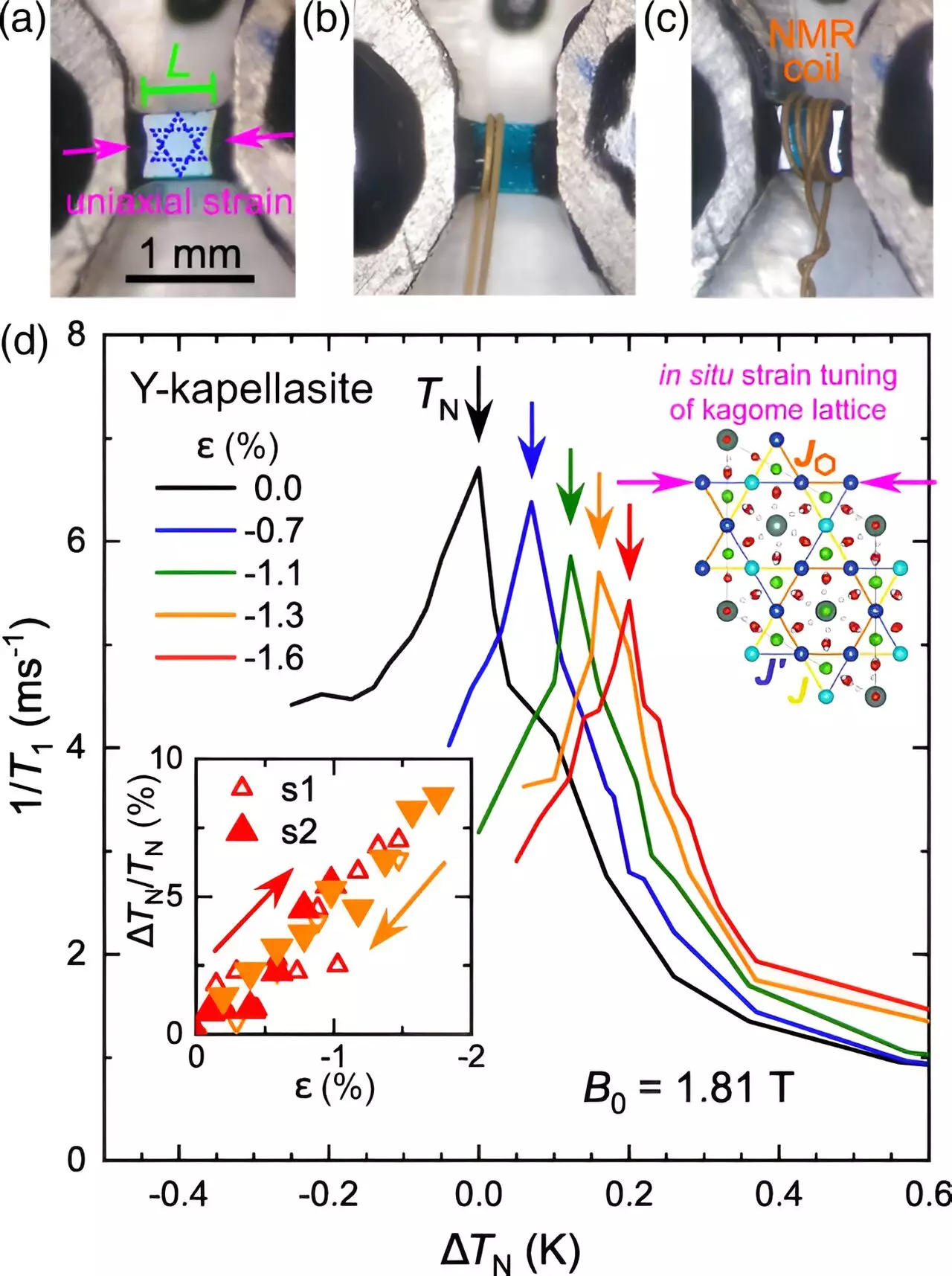Magnetism has been a subject of fascination for centuries, leading to numerous technological advancements. While traditional ferromagnetism has been extensively studied and applied in various devices, there is growing interest in exploring other forms of magnetism for potential applications in data storage and quantum computing. However, discovering and controlling these novel forms of magnetism is a challenging endeavor. In a groundbreaking study, an international research team led by Professor Andrej Pustogow from TU Wien has achieved a significant breakthrough by continuously changing the type of magnetism in a crystal using mechanical pressure.
Magnetism arises from the behavior of electrons, either through their charge or the alignment of their magnetic moments. In the case of ferromagnetism, electron spins align parallel to each other, creating a strong magnetic field. However, in certain crystal arrangements, such as triangular or kagome lattices, an antiparallel alignment of spins is not possible due to geometrical frustration. This frustration leads to randomly arranged spin pairs and unpaired magnetic moments, which hold potential for applications in quantum computing and data storage.
Achieving precise control over the symmetry of crystal lattices and their magnetic properties is crucial in harnessing the potential of geometrical frustration. Although materials with strong geometrical frustration can be produced, the ability to continuously vary the degree of frustration in a single crystal has remained elusive. Professor Pustogow highlights the difficulty in manipulating material properties while maintaining control over the symmetry of the lattice.
To overcome this challenge, the research team employed mechanical pressure to alter the magnetism in the crystal. By subjecting the crystal to uniaxial stress, the researchers deformed the lattice structure and modified the magnetic interactions between electrons. The mechanical pressure acted as an external force that compelled the system into a preferred magnetic direction. Similar to real-life situations, where stress reduces frustration by forcing a decision, the applied pressure reduced the geometrical frustration in the crystal.
The researchers successfully increased the temperature of the magnetic phase transition by over 10% through the application of mechanical pressure. Although this increase may seem modest, it is significant in the context of the potential applications. Professor Pustogow highlights the analogy of increasing the freezing point of water by 10%, which would have drastic consequences. This breakthrough opens avenues for unprecedented control over material properties by manipulating geometric frustration through mechanical stress.
While the current study reduced geometrical frustration, the research team is now focused on increasing it to eliminate antiferromagnetism entirely. Their goal is to realize a quantum spin liquid, a state where magnetic moments are entangled with each other and can be manipulated for quantum computing operations. The possibility of actively controlling geometrical frustration through mechanical stress presents unprecedented opportunities for manipulating material properties with ease.
The ability to continuously change the type of magnetism in a crystal using mechanical pressure represents a significant breakthrough in the field of magnetism research. By carefully applying uniaxial stress, the research team successfully altered the magnetic interactions within the crystal lattice. This breakthrough opens doors to previously unimaginable manipulations of material properties, holding immense potential for applications in data storage and quantum computing. The study not only advances our understanding of magnetism but also provides a new avenue for controlling and harnessing the power of magnetism “by pushing a button.”


Leave a Reply